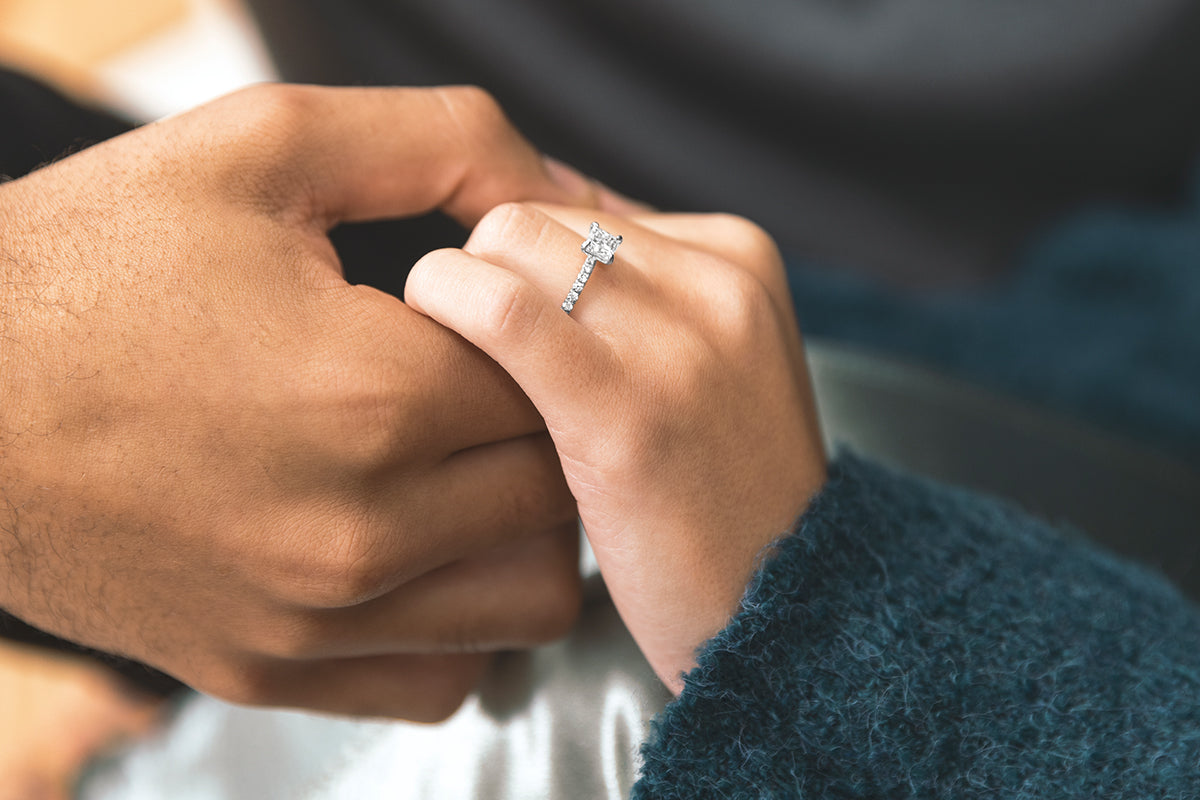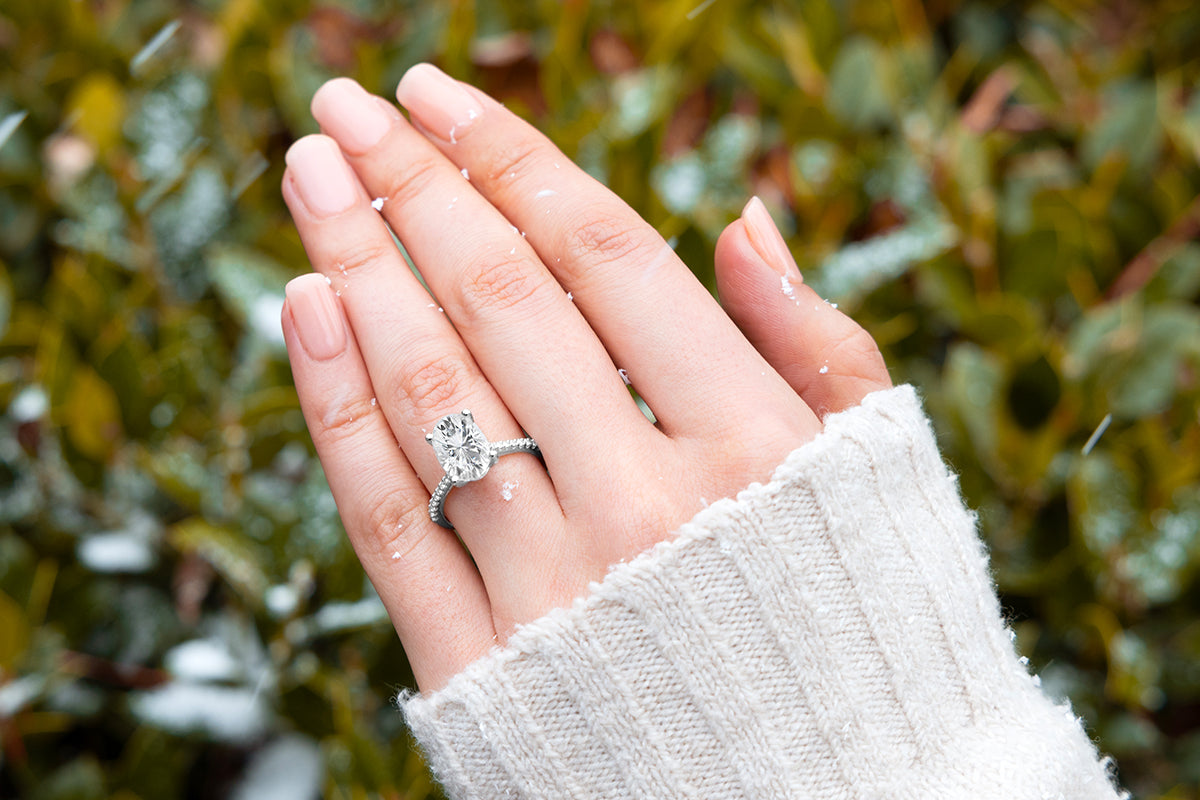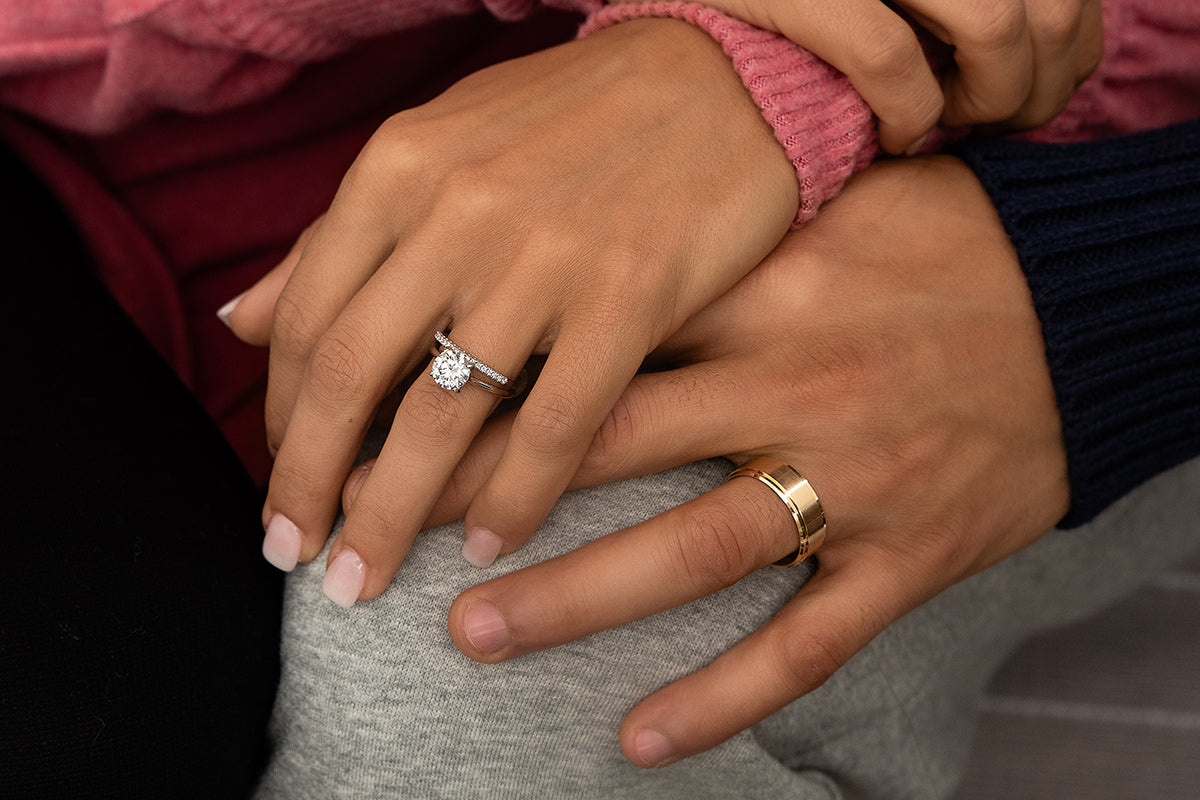When the time comes to pop the question to your special someone, few decisions are more important than picking the right engagement ring. There's a lot that goes into your choice. You want a ring that will look great on your soon-to-be fiancée, that they'll love to show off - but without breaking the bank or creating ethical concerns which could sour the mood.
That's why more and more people are choosing moissanite rings! Moissanite is a lab-made stone that is quite similar to diamond in appearance, and nearly as hard, but it's much more affordable. Better yet, moissanite is 100% ethical! It's made by scientists, not exploited labor. We all know the horror stories of the diamond trade, but you can buy moissanite knowing that no one was hurt to create your engagement ring.
So, in this guide, we wanted to go over some of the major factors in choosing the perfect moissanite engagement ring for your loved one!
Five Things to Know When Choosing an Amazing Moissanite Ring Your Fiancée Will Love
1 - The 4Cs
Some may already know this, but just to review: The most important criteria when choosing engagement ring gems are called the 4Cs: Color, Cut, Clarity, and Carat weight. These are how moissanite (and diamond) gets graded.
Color: is on a scale from D to Z. The higher the letter, the less color is apparent in the stone. Higher is typically considered better, as is more expensive, but some people like stones with more color in them.
Cut: We'll cover cuts in more depth below, but basically, this describes the overall shape and style of the stone, as well as how well it refracts light passing through.
Clarity: Clarity describes whether the stone has any flaws in it. Moissanite tends to always have high clarity because it's lab-made, while diamonds tend to have flaws. Flawless diamonds are incredibly expensive, while moissanite remains affordable.
Carat weight: The size of a gemstone is measured in carats. The more carats, the bigger the gem, and the more it will cost. That said, unusual fractional carat weights - like 1.75, or 3.25 - are sometimes cheaper than whole numbers.
2 - Cuts and shapes
The cut of a gemstone describes both its outward appearance, as well as how it's cut below the setting (out of sight) and how the facets created will refract light passing through.
The shape of the cut describes how the stone looks when viewed straight on from above. Round cuts are the most common, but almost any shape could potentially be achieved. Rectangular shapes are becoming trendy!
Cutting style describes the arrangement of the facets. The most common is the brilliant cut style, which has 57-58 facets. Or there's the emerald style, which has four longer facets along the sides. Generally speaking, the more facets the gem has, the more it will cost and the more sparkly it will be.
Cut quality then specifically refers to how those facets interact with light. The more it sparkles, the better, at least for most people.
3 - Metal options
The metal used in your engagement ring's band is also important to its overall look, feel, and style. Engagement rings traditionally use either white or gold metals, although other colors have started gaining in popularity.
Gold is the most traditional option, with its distinctive yellow sheen that goes well with many skin types. However, gold is also one of the softest metals, so a pure gold ring is easily damaged. Some prefer "rose gold," a blend of copper and gold, for both its unique color and for being much harder than pure gold. "White gold," blended with platinum or silver, is another option for improving hardness - but then it's hard to tell that it's actually gold.
Platinum is another popular option, with an extremely elegant white-grey look. Like gold, pure platinum can be a bit soft, but most platinum rings have a small (<5%) number of other metals mixed in to improve its strength and durability. Platinum does tend to be expensive, though.
Silver is occasionally used for engagement rings, but it's easily tarnished. Also, some people are allergic to silver and can develop a rash when wearing silver jewelry, so don't choose this unless you already know your fiancée can wear silver without problems.
4 - Settings
The setting is the frame that displays the main gemstone. Settings can be as simple or as complicated as you want, allowing you to choose a ring that perfectly complements your beloved's style.
Some of the most popular settings include:
Prongs. In this case, the gem is raised above the ring and held in place by several prongs. This puts the gemstone front and center, and typically the rest of the ring is relatively simple so that the gem can be the true star of the show.
Bezel. A bezel is a small strip of metal that is placed around the gem to hold it in place. The bezel may also be adorned with other gems, or it might simply be there as a frame. Bezels also provide better protection for the stone.
Halos. Rather than a visible bezel, the stone is framed by a ring of smaller gemstones. These could also be moissanite, or you could get creative and use other colored gems to add more variety.
5 - Side stones
Finally, there's the question of whether you want side stones set into the band, which flank the main gem. These can add a lot of flair to the ring, and it's another good place to use gems of a different color to create a distinctive look. If your fiancée has a favorite color they often wear, consider using that for the side stones.
Just be careful the side stones don't overwhelm the main gem. They're like accessories for your accessory, enhancing it without upstaging it.
Shop for the Perfect Moissanite Ring
Moissanite Outlet is your source for the best moissanite rings online! Check out our full collection of moissanite engagement rings, or click here to see our weekly specials.




Leave a comment
All comments are moderated before being published.
This site is protected by hCaptcha and the hCaptcha Privacy Policy and Terms of Service apply.